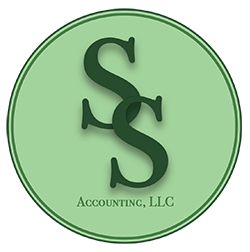Two of the most common mistakes we see on the profit & loss are expensing owner draws/distributions and having cost of goods sold on the profit & loss when it should not be there.
If you are a business owner, here are the correct ways to account for draws/distributions and how to pay yourself:
Paying yourself with a Single Member LLC
A single member LLC has only one owner/member of a business (100% owner). Technically, the owner of a single member LLC is not supposed to pay themselves with a W2 or 1099. Instead, when the owner needs money for personal expenses he/she should write a check to themselves and account for this as an owner draw/distribution. An owner draw/distribution is not an expense on the profit & loss, instead it reduces your equity (aka: capital, retained earnings) on the balance sheet.
Paying yourself as an owner multi-member LLC
A multi-member LLC (aka: partnership) is an LLC with more than one member/owner. Like a single member LLC, owners can take draws/distributions which are not expensed on the profit & loss, but instead reduce each respective partner’s equity/capital accounts. Members in a multi-member LLC can also be paid through guaranteed payments. They are called guaranteed payments because they are guaranteed to be paid to the partners, regardless if the business has a profit or not. Guaranteed payments are tricky, because they are not reported on a W2. Instead, they are shown on the respective partners’ K-1 and that partner reports the guaranteed payment income on schedule E of their personal tax return. Guaranteed payments are deducted on the profit & loss of the business as an expense. The owners of partnership are not supposed to pay themselves with W2’s (Salaries) because they are considered partners and not employees.
Paying yourself as an owner of an S Corp
An S Corp can have one owner, two owners, three owners, up to 100 owners/shareholders. The owner of an S Corp is required to be paid a salary on a W2. The salary of the owner is deducted on the profit & loss. The owner can also take distributions, which again reduces equity on the balance sheet, but cannot be shown as an expense on the profit & loss.
Cost of Goods Sold
An easy way to get audited by the IRS is to have Cost of Goods sold on your business tax return when your business is clearly a service business. For example, if your business tax return says you are in the business of consulting, it would be assumed that your profit & loss will not have cost of goods sold as an expense as the business owner is getting paid for a service and not by selling a physical product.
When thinking of Cost of Goods sold, a “Good” is a physical item that you can touch. Examples of Cost of Goods sold would be the bread and meat a restaurant uses to make hamburgers, or the cost of wood used to conduct a remodeling job on a home.
A note about QuickBooks for Cost of Goods Sold: QuickBooks Online is great and we use it for many of our clients, but is has its downfalls. One thing bad about QuickBooks Online is it sometimes guesses incorrectly on what expense category to use. This is especially bad when it guesses using the cost of goods sold category for a service Company.
Do you need help fixing your profit and loss statement to repair the errors that may have been made? If you aren’t sure if it’s accurate, then get a second opinion on your books! Call Simpson and Simpson Accounting at 678-353-3296. Let our team of CPA’s look it over for errors and possible deductions. We have offices in Atlanta and Woodstock Ga.




